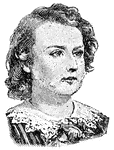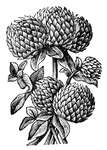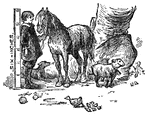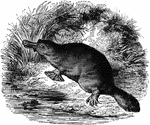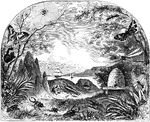
Armadillo
Armadillos are native to South America and are classed with the edentata or toothless animals.
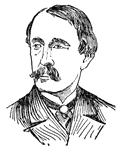
Henry Bergh
(1820-1888) Henry Bergh was a philanthropist who organized the Society for the Prevention of Cruelty…
!["[African American] drivers of the baggage train attached to General Pleasonton's Cavalry brigade watering their mules in the Rappahannock. General Pleasonton's cavalry was attended by a very efficient forage brigade, consisting of mules and [African American] riders. Our sketch represents their drivers taking them to water at the river. The hard work these animals will endure is something wonderful, and justifies the high estimation in which they are held in the army." — Frank Leslie, 1896](https://etc.usf.edu/clipart/11000/11025/baggagetrain_11025_mth.gif)
Baggage Train
"[African American] drivers of the baggage train attached to General Pleasonton's Cavalry brigade watering…
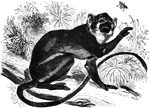
Saimiri
"Genus Saimiri. The animals of this genus are but about ten inches in length and are the most…

Cheirogale
"These animals have round heads, like the cats, the short snout, the lips garnished with mustaches,…
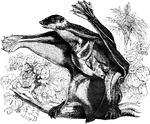
Flying Lemur
"Genus Galeopithecus. - The animals of this genus resemble the lemurs and the bats, having the general…
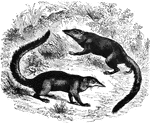
Tupaias
"These are small animals, having somewhat the form and agility of squirrels. The head is long, the snout…
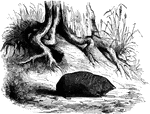
Chrysochloris Aurea
"These curious animals about three inches long, are exclusively African. They have a chunky body, small…
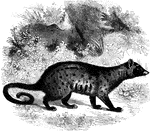
Paradoxurus
"These animals seem to have nearly as much command of their tails as the sajous. It is less prehensile,…
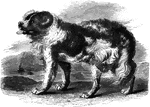
Newfoundland Dog
"These animals are of large size, and in almost every part of British America they are valuable and…
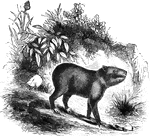
Capybara
"It measures three feet from muzzle to the hinder part, but has no tail. The general shape of the body…
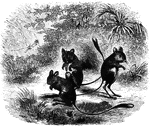
Jerboas
"These animals have the head large and rabbit-like; the ears long and pointed; the eyes full; the tail…

Jerboas
"These animals have the head large and rabbit-like; the ears long and pointed; the eyes full; the tail…
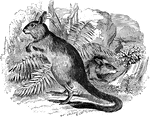
Cape Helamys
"These animals have a large head, a long body, long pointed ears, large eyes, and long hind-legs used…

Rock Rat
Petromys Typicus. "These animals move upon the hind-legs, which are not much larger than the fore-ones;…
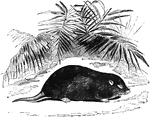
Malacca Rhizomys
"These animals have a long body, small eyes, and short tails, and resemble mole-rats" — S. G.…
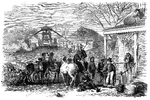
Bummers
"Sherman's 'Bummers' foraging in South Carolina. Our artist sent us with this sketch of 'Bummers Foraging'…

Georgia Campaign
"The campaign in Georgia- Federal troops foraging near Warsaw Sound."— Frank Leslie, 1896

Lammergeyer
The lammergeyer (Swiss for "lamb-killer") is a member of the vulture family, but has a notably feathered…
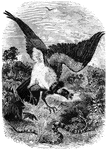
King Vulture
Genus sarcoramphus, a large vulture found in the tropical regions of the Americas, sometimes…
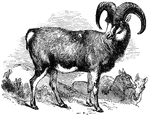
Mouflon
"The animals of this genus are distinguished by short tails, rogh hair; and enormous horns; they live…

Red-Wing Thrush
The red-wing thrush migrates from the north to the south of Europe in the winter, feeding on worms and…
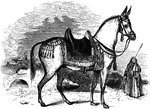
Abyssinian Mule
"The mule is in fact an exceedingly hardy, strong, and useful animals. In all mountain countries, for…
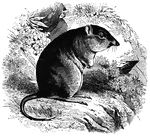
Potoroo Rat
"Is a mild, timid creature, of the size of a rabbit; the body is formed somewhat like that of a rat,…
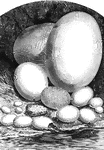
Comparative view of the size of the eggs of different animals
1, Epyornis; 2, Ostrich; 3, Cassoway; 4, Wild Goose; 5, hen; 6, Pigeon; 7, Humming-bird; 8, Eagle; 9,…
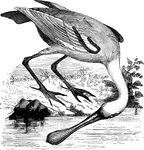
Roseate Spoonbill
Drawing its name from the widing of its bill towards the tip, the spoonbill frequents coastal and marshy…
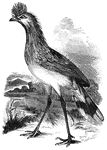
Cariama
Found on the elevated plains of Paraguay and Brazil, the cariama is about thirty inches long and feeds…

Variegated lizard
Found in Brazil and Guiana, the variegated lizard (or teguexin) preys on mice, frogs, and other small…
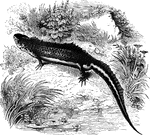
Common warty-newt
The common warty-newt of Europe... is six inches long, and is common in large ponds and ditches, where…
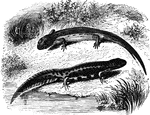
Salamanders
"The Land Salamanders, unlike the Tritons, are ovo-viparous, though the young at first inhabit the water…

Perch skeleton
"The bones of fishes are of a less dense and compact nature than in the higher order of animals; in…

Thresher Shark
"Is twelve to eighteen feet long, the tail nearly as long as the body; it uses this member for attacking…

Seahorse
"These animals have a head of the shape of a horse, and a long tail without any fin, but which is used…

Trumpetfish
"Feeds on minute animals found amonth the sea-weed; its flesh is good; length five inches and upward;…

Red Gurnard
"Twelve to sixteen inches long; it feeds on curstaceous animals; spawns in May or June; it is esteemed…

Gudgeon
"Common in Europe, and is found in streams which flow over gravelly soil. It swims in shoals, feeds…

Bream
"It is abundant in the larer lakes and quiet rivers of Great Britain and Ireland. It swims in shoals;…

Redeye
"Is a very common fish in Europe; it is of brilliant colors, and very tenacious of life; it feeds on…
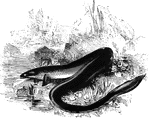
Common European Eel
"These have an elongated form, and a soft, thick, slimy skin; the scales are very minute, and imbedded…
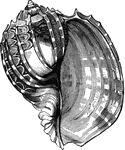
Harp-shell
"Abundant on the shores of Mauritius and of the neighboring islands. For this and analogous species,…
Eolis papillosa
"In these animals, which generally appear like small slugs, the branchiæ are arranged along on…

Mediterranean umbrella-shell
"These animals, called Umbrella-Shells, are furnished with a shell, which, however, is often…
Sagitta
"These are little fish-like animals furnished with one or two fin-like organs on the body and a broad…
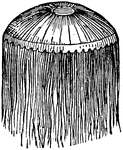
Acaleph
"One of the Acalephae; a name given to a large number of marine animals; and redpresenyted chiefly by…
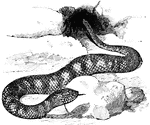
Acanthophis
"A genus of venomous serpents, they are of small size, live on dry land, and feed upon frogs, lizards,…
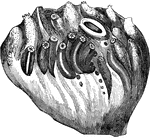
Compound ascidians
"The compound ascidians, or Botryllidae, are united togetyher by the coalescence of of their…
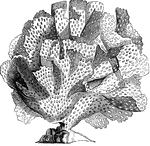
Compound Ascidians
"The compound ascidians, or Botryllidae, are united togetyher by the coalescence of of their…
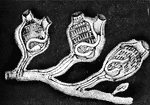
Social Ascidians
"The Clavellinidae, or Social Ascidians, are united by means of a sort of creeping…
Pyrosoma
"The colonies of these singular creatues are in the form of a cartilaginous tube, open at one end. In…
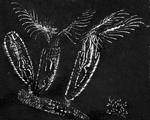
Plumatella
"Their shells are usually of a leathery texture, nearly transparent, and usually spring from a root-stalk…
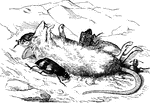
Burying Beetles
"The Burying Beetles are prompted by their insect to bury any small animals or pieces of carrion as…
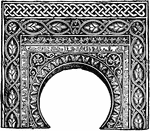
Arabesque Archway
"Arabesque is a style of ornamentation in which are represented men, animals (the latter consisting…
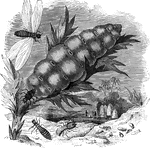
White Ants
"These animals, often called White Ants, live in vast communities, principally in the hotter…
